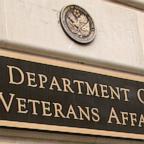
The race for president is a true jump-ball
According to 538's final presidential forecast, Harris has a 50-in-100 chance of winning the majority of Electoral College votes after all votes are counted today (or, in the case of a particularly tight race, over the next few days). We give Trump a 49-in-100 chance to win. Practically speaking those odds are roughly indistinguishable: You would have to flip a coin thousands of times to determine if it was slightly unfair, given a 49-in-100 chance of coming up heads or tails.
Statistically, too, a 50-in-100 chance and a 49-in-100 chance are practically indistinguishable when it comes to elections and polling. Due to the randomness in polling and changes in demographics and turnout from cycle to cycle, small changes in the settings of our model could easily change a 50-in-100 edge to 52-in-100, or even 55-in-100. These probabilities come from our subjective statistical assumptions about elections and polling that are correct on average over the long term, but can change in important ways in the short term.
That's all to say that our overall characterization of the race is more important than the precise probability of its outcome. And, by and large, we have characterized the race as a toss-up since launching our forecast for the Harris versus Trump race in August.
Our forecast today is so close because the polls are close. According to our final polling averages, the margin between Trump and Harris is 2 percentage points or less in all seven swing states. But it is worth stressing that the polls will not be exactly correct. Polls overestimated Democrats by more than 2 points in both 2016 and 2020, for example, and our election model thinks the expected bias in polls this year is 3.8 percentage points on average, and could be more or less, favoring either party equally. When we did the math we found that polling error should be larger than 2 points favoring either candidate about 60% of the time.

You should not expect polls in presidential races to be perfectly accurate, in other words. You should expect them to be as imperfect as they have been historically. And in a race with very tenuous advantages for either party in each key state, that means there's a wide range of potential outcomes in the election. And that's why we've been saying the race isn't necessarily going to be close just because the polls are. Trump and Harris, our model says, are both a normal polling error away from an Electoral College blowout. If we shift the polls by 4 points toward Harris, she would win the election with 319 Electoral College votes. Meanwhile, Trump could win with 312 electoral votes if the polls underestimate him by 4 points instead.
Hopefully, this illustrates just how uncertain a 50-in-100 chance of winning the election really is. When we say the race for the White House is a toss-up and could go either way, we mean it.





